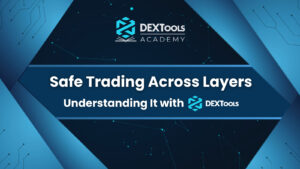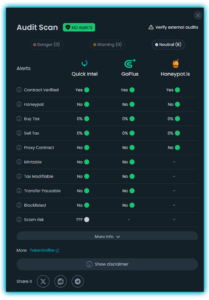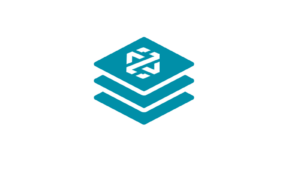General


- We continue to explain everything about DeFi, helping you understand and improve your trading experience.
- Next, we’ll discuss about safe trading across different layers, and how DEXTools aids in gaining insights from each, enabling seamless trading across multiple blockchains.
Let’s get to it!
 Understanding Layers in DeFi
Understanding Layers in DeFi
- In decentralized finance (DeFi), blockchain architecture is often divided into Layer 1, Layer 2, and Layer 3, each providing distinct services to support the ecosystem’s scalability, functionality, and usability.
- These layers play a crucial role in facilitating smooth trading and data analysis. Here’s a closer look at each layer and its influence on DeFi trading within DEXTools.
Maximizing Efficiency with DEXTools for Layer 2 and Layer 3 DeFi Trading
- To use the DEXTools app efficiently, particularly for DeFi trading on Layer 2 (L2) and Layer 3 (L3) solutions, start by ensuring you’re connected to the correct blockchain network within your wallet (e.g., Arbitrum or Optimism for L2s). DEXTools offers analytics for tokens across various chains.
- DEXTools allows you to monitor live trading pairs, view order book depth, and access historical data. For L3 protocols, which often function as application-specific layers on top of L2s, ensure you understand the protocol’s unique features (e.g., zk-rollups or optimistic rollups) and how they impact token performance.
- DEXTools’ Price Alerts and Liquidity Pools tabs help track liquidity changes, especially important for emerging L3 tokens with volatile liquidity profiles. Use the DEXTscore metric and also Audits Tab to evaluate project reliability, which is crucial in nascent L3 environments where due diligence is key.
 The Live New Pairs tool shows tokens immediately upon launch on a DEX, enabling traders to spot new assets early, especially on fast, low-fee Layer 2 and Layer 3 networks. Early access allows for potentially favorable entry points, though due diligence is essential due to higher risk.
The Live New Pairs tool shows tokens immediately upon launch on a DEX, enabling traders to spot new assets early, especially on fast, low-fee Layer 2 and Layer 3 networks. Early access allows for potentially favorable entry points, though due diligence is essential due to higher risk.
 Pair Explorer provides detailed insights into any token pair, including live charts, historical data, trading volume, order book depth, and liquidity. With customizable chart views, timeframes, and technical indicators, it supports both short- and long-term analysis. Liquidity providers also benefit from insights into liquidity patterns, indicating token stability and user confidence.
Pair Explorer provides detailed insights into any token pair, including live charts, historical data, trading volume, order book depth, and liquidity. With customizable chart views, timeframes, and technical indicators, it supports both short- and long-term analysis. Liquidity providers also benefit from insights into liquidity patterns, indicating token stability and user confidence.
And now, let’s discuss the different layers and how they work!
Layer 1: The Core Blockchain Network
- Layer 1 is the main blockchain network, where all fundamental transactions are recorded and secured. These Layer 1 networks ensure the blockchain’s security, decentralization, and immutability.
- However, as DeFi grows and more users interact with these networks, scalability challenges arise, leading to slower transactions and increased gas fees. For example, a high trading volume during peak times can create congestion, making it more costly and slower to execute trades.
 Executing transactions directly on a Layer 1 network may incur higher costs and occasional delays. DEXTools’ real-time data aggregation helps traders monitor these conditions and make informed decisions, alerting users to market fluctuations that could impact transaction speed and cost.
Executing transactions directly on a Layer 1 network may incur higher costs and occasional delays. DEXTools’ real-time data aggregation helps traders monitor these conditions and make informed decisions, alerting users to market fluctuations that could impact transaction speed and cost.
Layer 2: Enhanced Scalability and Reduced Fees
- Layer 2 solutions are built on top of Layer 1 blockchains to address their inherent scalability issues. They work by processing transactions off-chain and consolidating them periodically on the main blockchain.
- For DEXTools users, Layer 2 integration is a game-changer. DEXTools tracks multiple Layer 2-compatible DEXs, enabling users to execute and analyze trades with minimal delays and more stable transaction costs.
- This expanded functionality provides a smoother trading experience for users looking to make frequent, cost-effective trades on Layer 2 networks.
- By accessing DEXs on Layer 2 networks, traders benefit from lower fees, reduced slippage, and faster transaction times, making it ideal for smaller trades where cost efficiency is paramount.
- Examples in Ethereum include Base, Arbitrum, Polygon and Optimism. These networks significantly reduce congestion and gas fees, resulting in faster and more affordable transactions.

Base
- Base is a Layer 2 blockchain built on Ethereum using Optimistic Rollups to improve scalability and reduce transaction fees. Developed by Coinbase, it aims to provide a fast, secure, and cost-effective environment for decentralized applications (dApps) while leveraging Ethereum’s security and ecosystem. It focuses on user accessibility and growth.
You can access Base on DEXTools here.

Arbitrum:
- This is a Layer 2 scaling solution for Ethereum that enhances transaction speed and reduces costs by processing transactions off-chain. It uses rollups to improve scalability, maintaining Ethereum’s security while offering faster and cheaper transactions.
You can access Arbitrum on DEXTools here.

Polygon:
- Polygon is a Layer 2 network designed for Ethereum, providing high-speed and low-cost transactions. It achieves scalability through sidechains and a Proof-of-Stake mechanism, making it ideal for DeFi and NFT applications while retaining compatibility with Ethereum’s ecosystem.
You can access Polygon on DEXTools here.

Optimism:
- Optimism is a Layer 2 solution for Ethereum focused on scalability and cost efficiency. Using optimistic rollups, it processes transactions off-chain and publishes minimal data to Ethereum, enabling faster, lower-cost transactions while leveraging Ethereum’s security.
You can access Optimism on DEXTools here.

![]() Additionally, in the coming months, the launch of Unichain, another highly anticipated L2 blockchain developed by the Uniswap giant, is worth noting in the DeFi community.
Additionally, in the coming months, the launch of Unichain, another highly anticipated L2 blockchain developed by the Uniswap giant, is worth noting in the DeFi community.
- Once the mainnet is available on DEXTools, you’ll be able to trade new tokens and seize all the opportunities this promising blockchain will offer.
Layer 3: Applications and Cross-Chain Interoperability
- Layer 3 is the application layer where DeFi protocols, smart contracts, and DApps (decentralized applications) are built, allowing for a variety of functionalities like lending, borrowing, and trading.
- Layer 3 also addresses interoperability, making it possible to bridge different blockchains and Layer 2 networks. This is critical for DEXTools users, as it allows them to view, analyze, and trade across various chains seamlessly.
![]() For example, a DEXTools trader might track assets on Ethereum, Binance Smart Chain, and Polygon, gaining insights across these networks for optimal trading decisions. Layer 3 enables DEXTools to aggregate data from multiple blockchains, providing a comprehensive view of liquidity, volume, and price movements across the DeFi ecosystem.
For example, a DEXTools trader might track assets on Ethereum, Binance Smart Chain, and Polygon, gaining insights across these networks for optimal trading decisions. Layer 3 enables DEXTools to aggregate data from multiple blockchains, providing a comprehensive view of liquidity, volume, and price movements across the DeFi ecosystem.
Security in DEXTools: Facilitating Safe Trading Across Layers
- Security is a primary concern for DeFi traders, especially as they navigate multiple blockchain layers. DEXTools integrates numerous security features and audits designed to protect users from risks specific to Layer 1, Layer 2, and Layer 3 trading.
- DEXTools’ robust analytics tools enable traders to monitor contract addresses, track wallet histories, and detect potential honeypot scams—contracts that appear legitimate but prevent users from withdrawing funds after purchase. Additionally, the platform employs “rug check” tools that alert users to potential vulnerabilities in token liquidity or developer wallets that could signal an impending rug pull.

Audit Scan on DEXTools
In short: by consolidating security protocols for different blockchain layers, DEXTools allows traders to make more secure transactions, reducing exposure to fraud and contract manipulation.
- The platform’s data analysis tools and security warnings provided by DEXTools, are particularly useful when trading on Layer 2 networks, where newer protocols might lack the same level of scrutiny as Layer 1 assets.
- DEXTools also helps ensure transparency in Layer 3 applications by providing insight into the behavior and stability of cross-chain assets, making it a valuable resource for informed and secure trading across the DeFi ecosystem.
And that’s it!
- Remember that you have at your disposal our glossary with more than 300 crypto and DeFi terms.
- Feel free to join our huge community on Telegram.
Thank you, and happy trading!

 Understanding Layers in DeFi
Understanding Layers in DeFi

